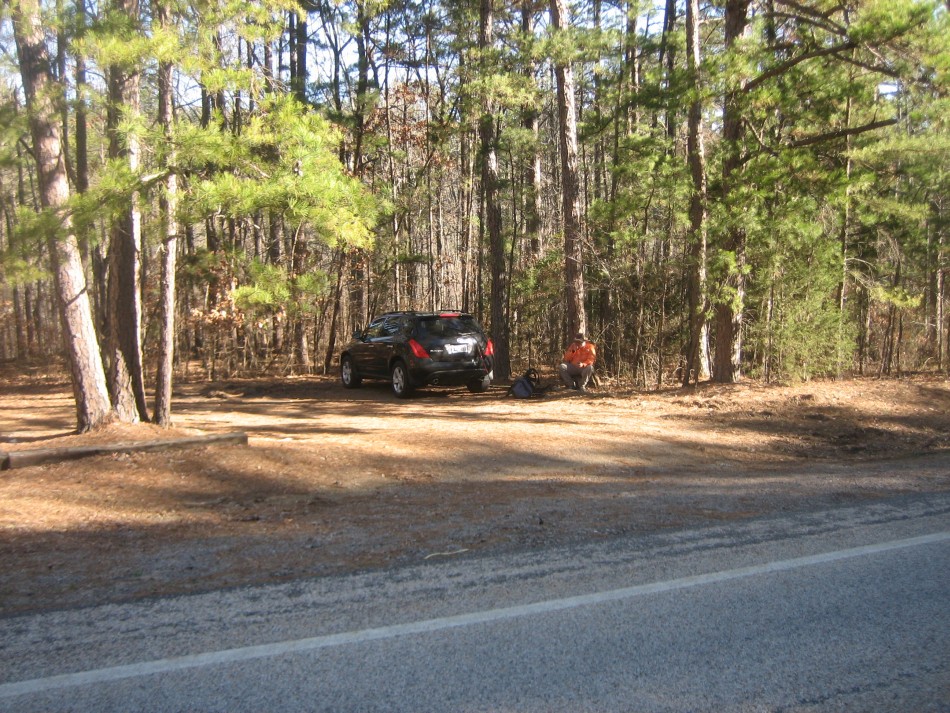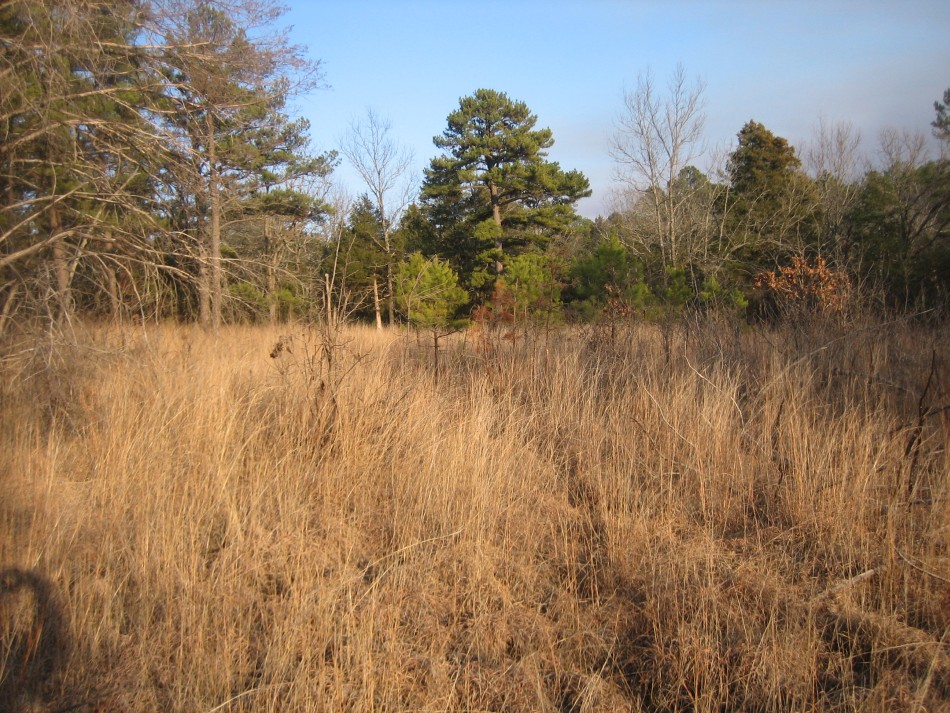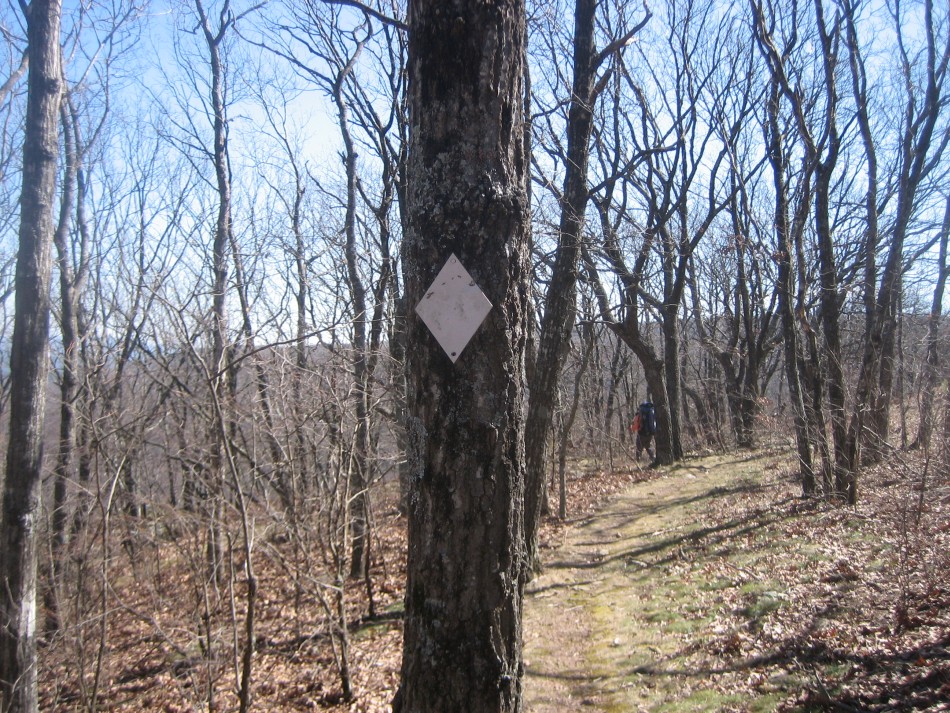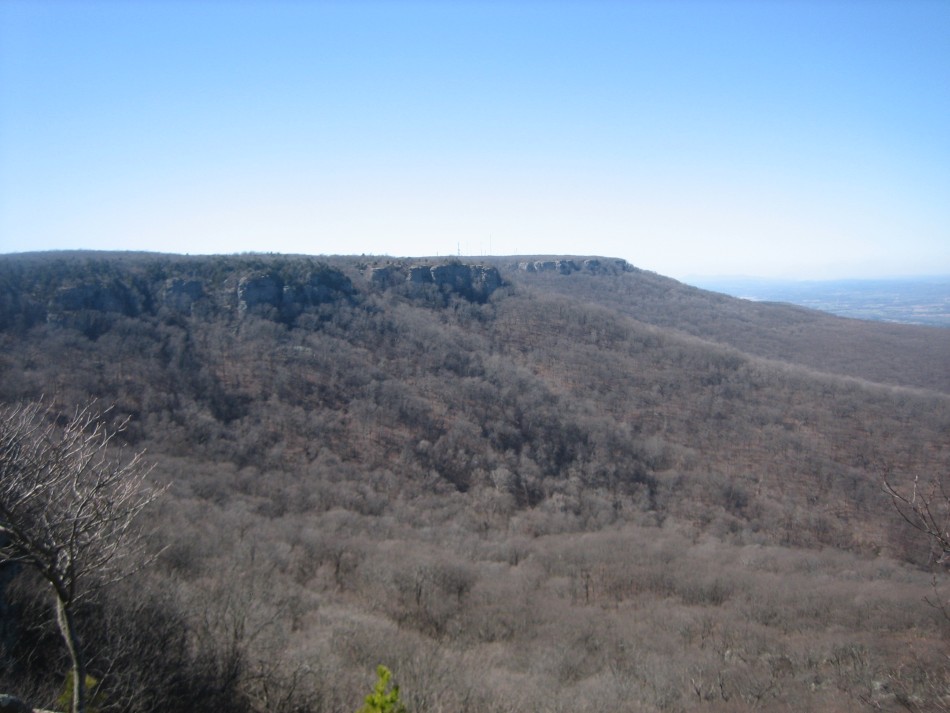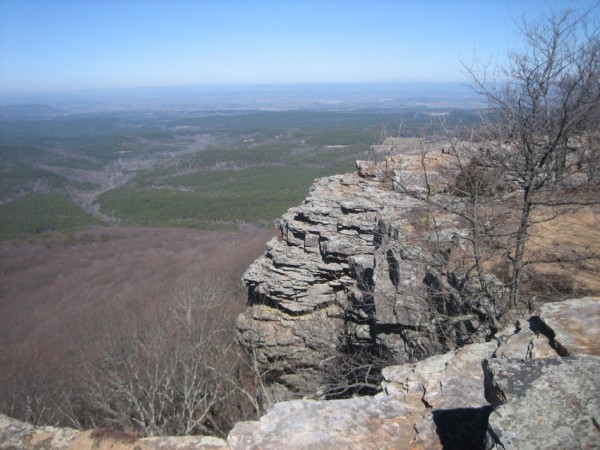
The Mount Magazine Trail begins in Mount Magazine State Park on the north rim of Arkansas’s highest mountain. It ends at Cove Lake in the Ozark National Forest, 9.8 miles to the north.
This is a point-to-point hike, but with three trailheads, there is plenty of flexibility in how it is hiked.
Getting to the Cameron Bluff Trailhead
Our hike starts at the Cameron Bluff trailhead on the road to the scenic vistas. Coming in from Highway 309, go west at the road to the lodge and campgrounds. About a mile further, you can either turn left to go to the lodge or turn right to go to the trailhead. Turning right, you will pass a one-way road coming in from the right (no entry), pass the Cameron Bluff campground on your right (and Signal Hill Trail on your left), and then a one-way road to the right. This is your turn.
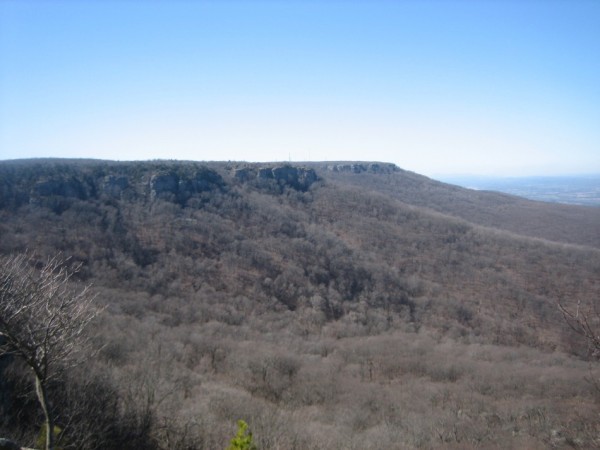
The black top road is Overlook Drive and will pass three scenic turnouts. The fourth one has a short driveway with a stone CCC shelter at the end.
This is a good place to organize your gear because about a hundred feet down Overlook Drive is the Mt Magazine trail.
You can also start in the Cameron Bluff campground and take the short trail through the woods to the Overlook Drive trailhead.
Mount Magazine Trail Map
Click here for full-screen trail map.

Before you start your descent, you should check out the view (video) from Cameron Bluff because you won’t get any good vistas on the trail.
Mount Magazine Geology
Forming the bluff and ringing the top of Mt. Magazine is a layer of Savannah sandstone (Savannah Formation). This 300-million-year-old rock was deposited in a basin bounded by the Ozark Highlands to the north and the Ouachita Mountains to the south, known as the Arkoma Basin.
Below the Savannah sandstone, you can see the slope of the mountain taper to the plains below. This is the McAlester shale showing its weakness and inability to form cliffs.
At the base of the mountain covered in pines is the Hartshorne sandstone. The Hartshorne is often associated with a commercially viable coal seam (Hartshorne coal) and was formed in an ancient delta system.

Hiking the Magazine Mountain Trail
The first 2.6 miles is downhill through the oak and hickory forest common to the Ozarks and Ouachitas. While there may be a few places where the leaf-covered rocks might make footing a little precarious, it is a fairly gentle gradient (easy to say, I was going downhill).
The trail is marked with white plastic diamonds, but even without them you would have no problem following it.

There is one spot at milepost 8.5 where an unofficial trail continues straight while the Mt. Magazine Trail switches back to the left. (Note: regarding my reference to mileposts, only the ones that are integers refer to a physical mile post. Decimals such as “8.5” are estimates based on their position between physical mileposts.)
Just before this junction, you will see a trail marker turned sideways. This is marked on the map.

At the foot of the mountain, you will cross a gravel road and pass a sign announcing that you just came 2.7 miles from Cameron Bluff. Here you enter the Greenbench Road Trailhead area.
This brings up the discrepancy in mileage. The US Forest Service map says 2.1 mile, the sign says 2.7, and my GPS said 2.6. The forest service map also says the trail is 9.3 miles long while the state park web site says 9.7. The signs on the trail have differing opinions.
Looking at the map, I think the Forest Service started their measurement from the state park boundary. I am starting at the road. I think it is possible that the park may have started measuring at the Cameron Bluff campground. I think the Forest Service estimate for the mileage to Cove Lake is probably right, so from Overlook Drive to Cove Lake Trailhead, I figure it is 9.8 miles.
At the Greenbench Trailhead (video) there is a picnic table and registration sign. When we were there, there was also a stack of USFS maps of the trail. This is one of the better USFS trail maps. It has contours, pretty close to 1:24,000, some of the forest roads, private lands, and mileages. Most importantly, their depiction of the trail is very accurate.
The next 3.1 miles will take you to the Corley Trailhead. The first mile is on fairly level ground as the trail crosses a level area underlain by Hartshorne Sandstone. You will notice that the character of the forest has changed to a pine-hardwood mix.
In about 0.2 miles, you will cross a small dam that separates a double pond. In another couple of tenths, the trail comes to the edge of the little “mesa” and follows the edge until mile post 6.
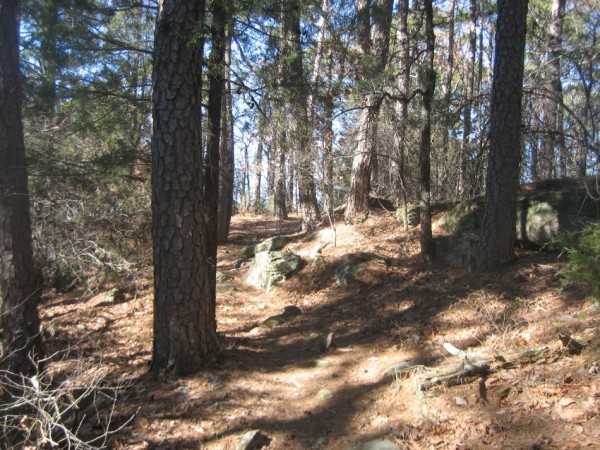
I think it was just before milepost 6 where a small glade was on the left. Glades are small grassy areas, usually with cedar trees and sometimes prickly pear cactus, and maybe yucca. They are caused by a tight and competent underlying rock unit (in this case, Hartshorne Sandstone) that prevents a thicker soil horizon from forming.
The thin soil and tight rock keep the pines and hardwoods from growing. The water runs off quickly making it drier so the cactus and yucca like it and are more competitive. The cedar roots grow out horizontally, so they grow just fine, though they tend to be smaller than what you will see elsewhere in the forest.
After milepost 6, the trail drops into Ross Hollow, which besides the ponds (which I would filter and drink) is the first water on the trail. The trail crosses an intermittent stream (video) which was running, and stays along the east side of the hollow until just past mile marker 5 where it intersects a forest road, turns right, and follows it for a few hundred yards.
You will see a gated road on your left that goes to a gas well. There are several wells in the area that have resulted in many new and well maintained roads. The entire Arkoma Basin has become a prolific gas field in the last several decades.
A hundred feet or so past the gate, the trail leaves the road to the left and follows a gas line right-of-way. After a small ascent, the trail come back to the top of the Hartshorne Sandstone, back to level ground, and meets the spur trail to the Corley Trailhead. The trailhead parking lot is a several hundred feet to the right.

The next 4.1 miles will finish the hike at Cove Lake. From the Corley spur, the trail skirts the edge of Ross Hollow for another 0.8 miles providing an occasional view of the valley.

As noted above, from the top of Cameron Bluff the short leaf pines continue to be abundant. A little after the trail leaves the edge, you will pass some USFS signs marking the corner of private land shown on the map at about milepost 3.3.
You will cross a gravel road at about milepost 3.1. There are 2 intermittent streams between mile post 3 and 2. Though it had been pretty dry, there was plenty of water running in both creeks. We took advantage of it and made a leave-no-trace camp in the woods, just off the trail before milepost 2.
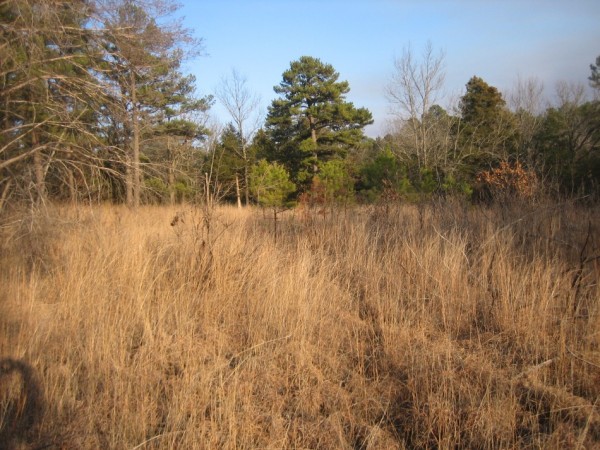
Just past milepost 2, there is a prairie to the right and then the trail enters a piney area and turns east-southeast. It crosses an intermittent stream at about milepost 1.3, then at milepost 1.0 it begins to descend to Cove Creek.
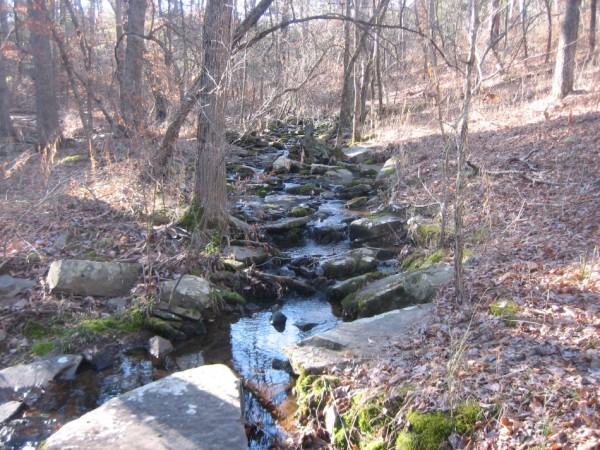
After a few tenths of a mile, the trail begins the final uphill stretch to the Cove Lake Trailhead and milepost 0.0.
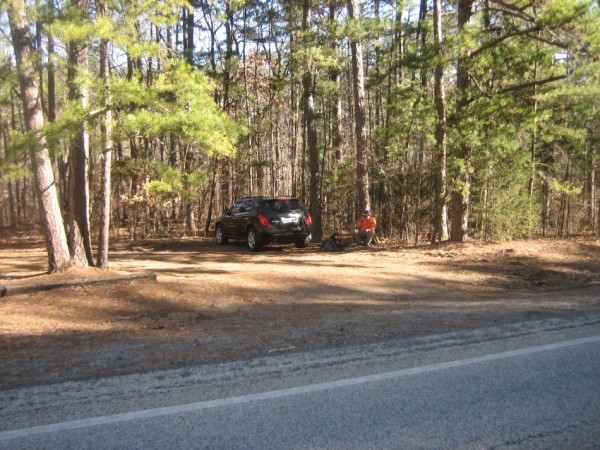
The Cove Lake Trailhead is a small unimproved parking lot on Highway 309. There is a registration box, a sign, and room for about 3 or 4 cars.
Photo Gallery
Click here or below for full-screen photo gallery.

Final Notes
Date Hiked: February 26, 2012
Official Info: USGS 7.5 minute Quadrangles: Blue Mountain and Magazine Mt NE. Ozark-St. Francis National Forests, Russellville, AR, (479) 964-7200. Magazine Ranger District, Paris, AR (479) 963-3076. Mt Magazine State Park, Paris AR, (479) 963-8502. Click here to download the official USFS Mt. Magazine Hiking Trail map (pdf).
GPS File: Click this link to download the track in a gpx format. You can save it to your computer and use your GPS software to load it to your GPS. There are 515 track points so if it exceeds your saved track capacity, you will need to break up into more digestible bites.
Google Earth Track: Click this link to download the track in the Google Earth kml format and trace the route in 3D. Save it to your computer and open it with Google Earth.
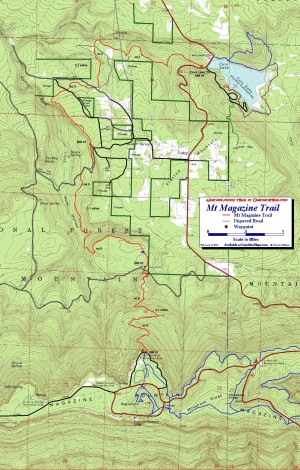
Click this link for a large jpg 1:24,000 contour trail map I made based on the USGS 7.5 minute quadrangles. A waterproof version can be purchased at OuachitaMaps.com.
[This was originally posted on OuachitaMaps.com on March 1, 2012. ]


